In Europe, we have reindeer. In America, they have caribou. However, despite the difference in names, they’re the same species.
This is just one example of how the common names of animals can cause confusion. Precisely for this reason, 18th-century botanist Carl Linnaeus devised a system to standardise the naming and classification of all living beings regardless of vernacular. Known as the ‘father of modern taxonomy’, Linnaeus proposed that all organisms are uniformly given a ‘genus, species’ name. This system gives each species a unique identity.
Often in Latin or Greek, these scientific names may look and sound strange but many of us are likely familiar with some already. Think of the Boa constrictor, or even Tyrannosaurus rex.
Scientific names often reveal interesting facts about animals and plants. Here’s a closer look at some of the more interesting scientific names for British wildlife.
What’s in a name?
Cuckoo © Joshua Copping
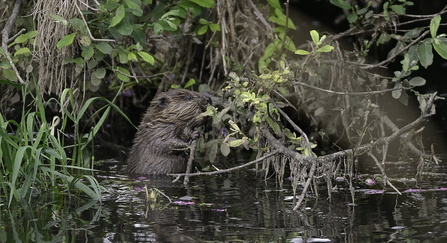
Young Eurasian beaver (Castor fiber) nibbling at a willow branch overhanging the River Otter at dusk. © Nick Upton
Eurasian beaver, Castor fiber
Castor references the oily, scented substance called castoreum that the native British mammals secrete and use to scent mark their territory. Historically, beavers were hunted for the substance as it was used in perfume, food and medicine, this persecution led to their eventual extinction in the UK in the 16th century. Hampshire & Isle of Wight Wildlife Trust are hoping to release wild beavers on the Isle of Wight in future.
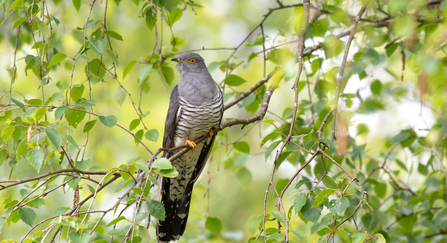
Cuckoo © Joshua Copping
Common cuckoo, Cuculous canorus
These UK summer migrants are known for being brood parasites and coaxing other birds into raising their chicks. The cuckoo gets its common name from the male’s onomatopoeic call and their scientific name recognises this with canorus meaning melodious.
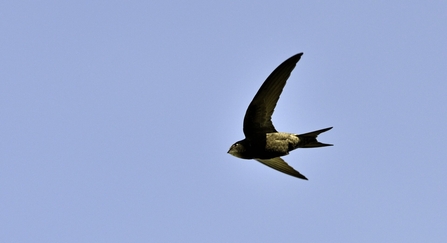
Common Swift Apus apus Norfolk summer © David Tipling/2020VISION
Swift, Apus apus
Another beloved summer migrant, these restless birds hardly ever touch ground. They sleep, eat, gather nest materials, and even mate on the wing and because of this have evolved extremely short legs, possibly the shortest of any similarly sized bird. Its scientific name, which literally means footless, reflects this.
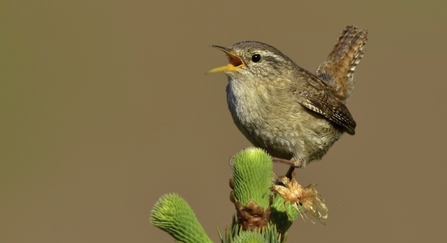
Wren Troglodytes troglodytes Singing in territory in Spring Wales, UK ©Andy Rouse/2020VISION
Wren, Troglodytes troglodytes
One of our smallest garden birds, the wren’s scientific name translates as cave-dweller. This refers to the cave-like domed nests it builds, plus the bird’s habit of staying concealed in the undergrowth.
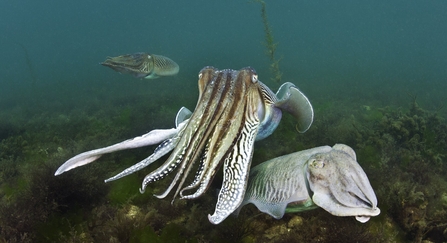
A male common cuttlefish (Sepia officinalis) closely guards his mate (right) © Alexander Mustard/2020VISION
Common cuttlefish, Sepia officinalis
Like squid and octopus, cuttlefish will eject ink to confuse and escape from predators. The taxonomic name for the cuttlefish genus, Sepia, is associated with the dark colour of the cephalopod’s ink, which has historically been used as dye and for medicine.
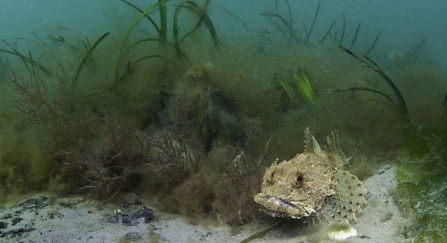
A scorpionfish (Taurulus bubalis) on edge of an eelgrass (Zostera marina) meadow (overgrown with filamentous algae). Studland Bay, Dorset, England. English Channel. © Alexander Mustard/2020VISION
Common eelgrass, Zostera marina
One of the UK’s native seagrass species that the Wildlife Trust are currently restoring in the Solent, its scientific name means ‘belt of the sea’ in reference to the plant’s ribbon-shaped leaves.
Clearly, there’s much to be learned from delving into the world of scientific names of animals and plants – you may even discover a cave-dweller in your garden!

